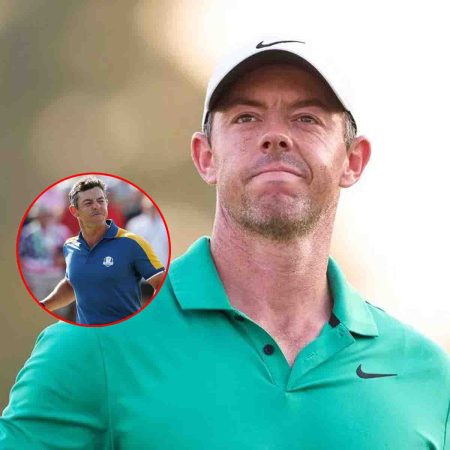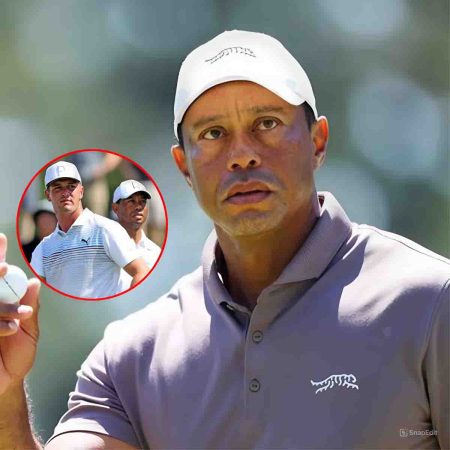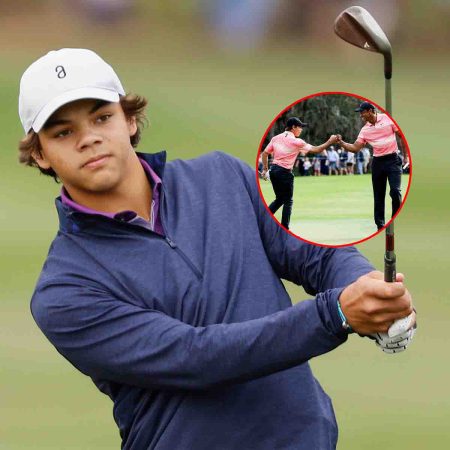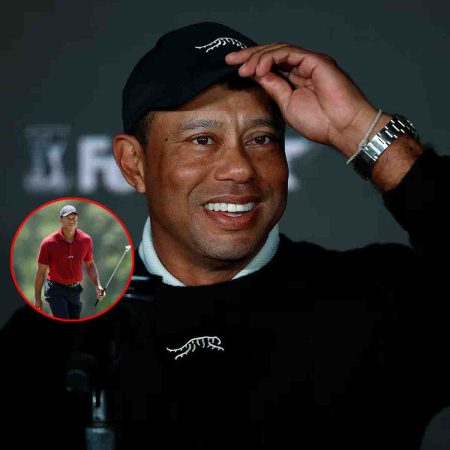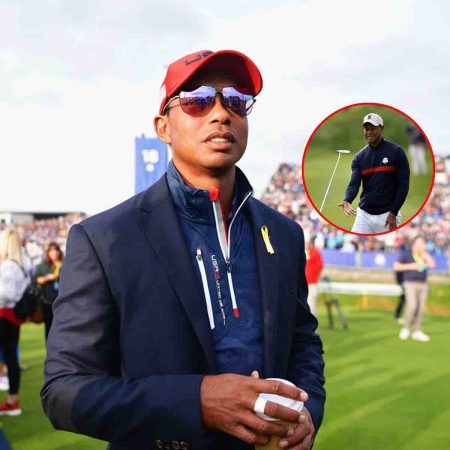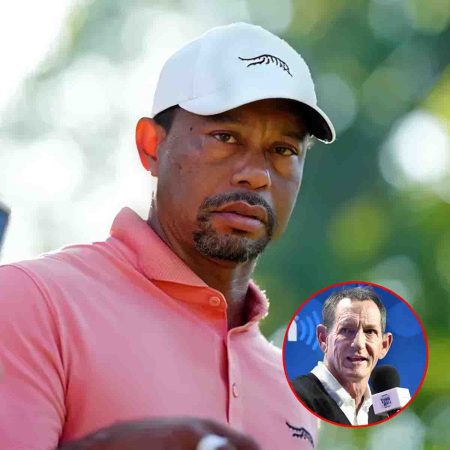The Liverpool midfield has come under scrutiny of late, but Jürgen Klopp has shifted the blame — correctly, it turns out. Mohamed Salah is among the strugglers.
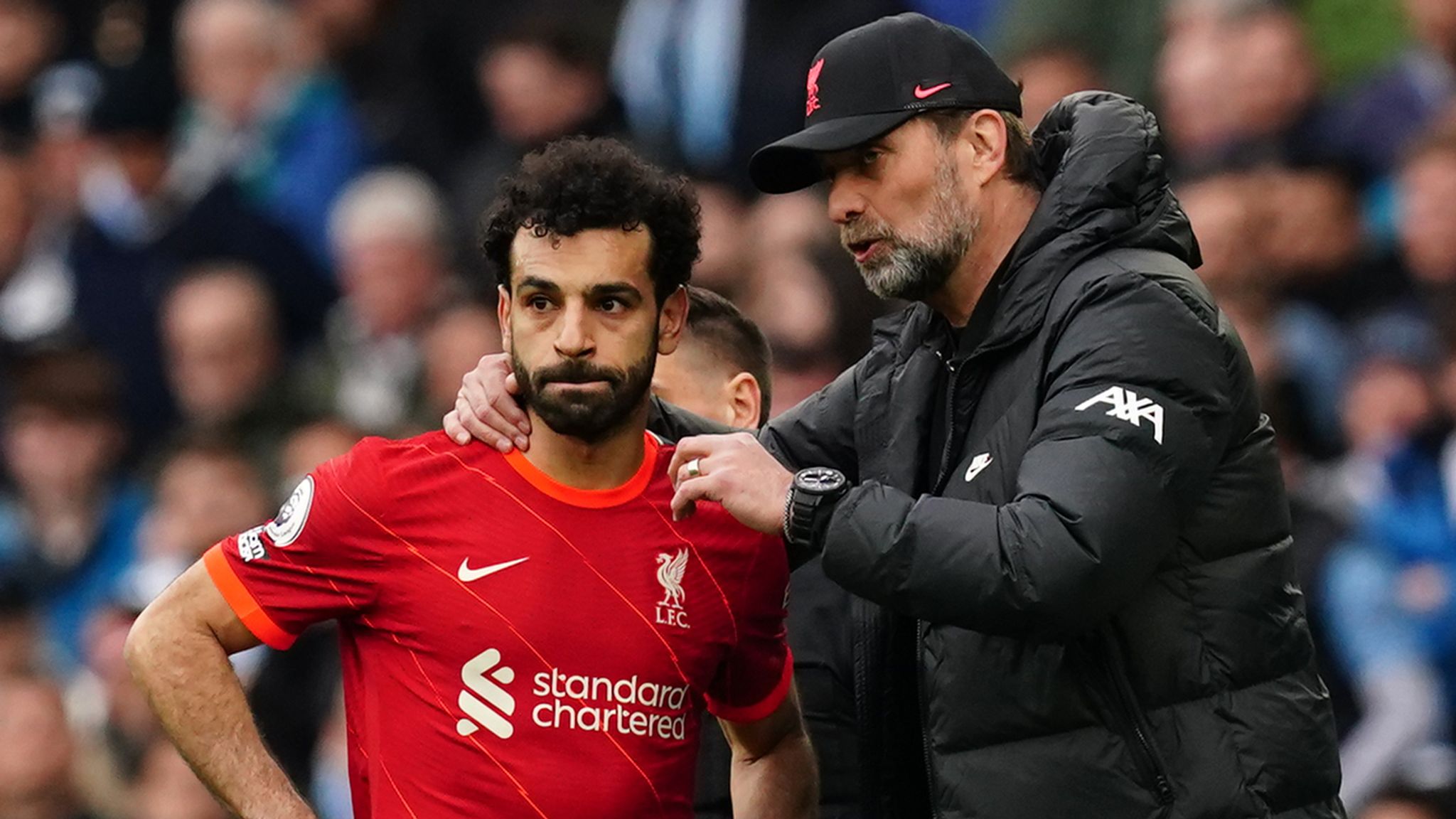
“For the whole game I thought we didn’t win enough challenges, to be honest,” Liverpool manager Jürgen Klopp said after watching a near-full strength side draw 2-2 with a struggling, much-changed Wolves team in the third round of the FA Cup.
“There are a lot of situations where I thought they win a challenge and all of sudden we are completely open; we had two or three players in the challenge moving to the ball and when you are there, fine, you have to win the ball,” he explained (via LFC). “If you don’t do that and they can get out then it looks like, ‘Where are they’?'”
Klopp, of course, was focused on the 90 minutes that had just played out, which saw goals from Mohamed Salah and Darwin Núñez at least earn a replay. But do his comments here point to a wider issue with this porous Liverpool side?
To find out, we look at the ground duel success percentage of Liverpool players in the Premier League this season (with a minimum of 450 minutes or five full matches played) and compare it to their record in the 92-point side of 2021/22.
A duel, it’s worth noting, is defined by Opta as a 50-50 contest between two players of opposing sides in the match. They can be contested aerially or on the turf.
This doesn’t offer a complete picture of a player’s defensive contribution, of course, but it is doubtless a large part of it.
Defenders
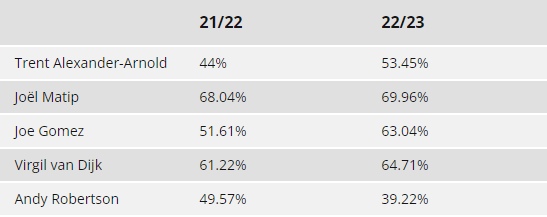
There are a couple of shocks within the defensive ranks. Trent Alexander-Arnold endured one of the trickiest spells of his Liverpool career in the first phase of the season, with his defensive woes discussed extensively across the English footballing landscape, but his success rate has actually improved markedly.
Likewise, it’s been argued that center-back Virgil van Dijk is in decline based on some uncharacteristic errors, but he’s prevailing in more of his 50/50s too.
Though most would likely name Andy Robertson as the Reds’ best performing defender this season, his numbers have dropped alarmingly as it turns out. Perhaps his strong attacking contribution — he leads the squad for assists with eight — has disguised his failings up against the opposition’s winger.
Midfielders
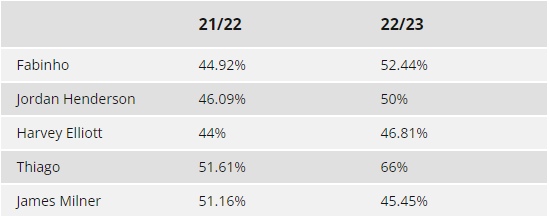
Even more surprising than the predominant upward trend in the defenders is the improvement in midfield, the area widely considered Liverpool’s greatest weakness.
Alongside Van Dijk and Alexander-Arnold, Fabinho has faced the most criticism this season, with some suggesting that he’s entered his decline. And yet, he’s winning the majority of his ground duels, a considerable upturn on last season. The figures may challenge the narratives around Jordan Henderson too.
Harvey Elliott has also fared better but the sample size from last season is admittedly small, and 46.81 per cent still isn’t good enough.
Finally, the data serves to illustrate the value of Thiago, who boasts the second-best success rate in the entire squad, and the waning powers of 37-year-old James Milner.
Attackers
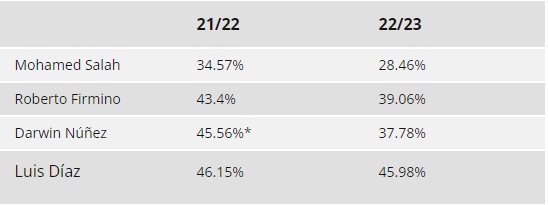
*For Benfica in the Primeira Liga
Prior to the game against Wolves, Klopp sought to deflect the attention on his midfield by pointing out the need to defend as a team (via This is Anfield).
It all starts at the front, and Liverpool’s attackers have been lacking in this regard. The players in question may have the inclination to press but they’re being bypassed far too easily. Salah and Roberto Firmino have both dipped significantly compared to last season, while Núñez is behind on his Benfica numbers.
The importance of Luis Díaz is once again evident — his pre-injury numbers were virtually identical to last season and by far the highest in the forward ranks.
The present mess at Anfield is the result of a collective failure and the reality is that only a collective improvement will lift the club from the mire. In this particular department, the onus is on Salah and the rest of the attackers, who have largely been spared criticism, to raise their game.
source: https://www.liverpool.com/



